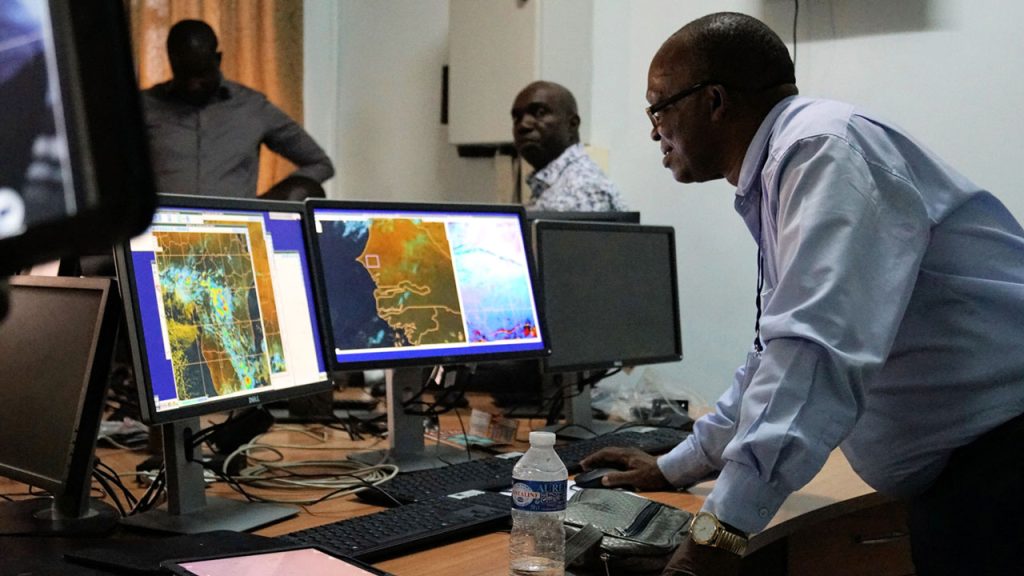
Global science team joins forces to forecast severe storms in Southern Africa
Early warnings of severe thunderstorms in Mozambique, South Africa, and Zambia are being developed alongside urban communities, with an international team of weather scientists.
Across Southern Africa, extreme weather puts hundreds of thousands of people at risk every year – and in the coming years, storms are expected to increase due to climate change.
Over the next 2 weeks, weather scientists from the National Centre for Atmospheric Science are joining an international team to develop short-term regional forecasts for severe storms across Southern Africa.
The scientists are part of the WISER Early Warnings for Southern Africa (EWSA) project, and they have just begun a weather forecasting “testbed”.
A testbed is an opportunity to bring weather forecasters and forecast users together, to evaluate current weather services across the region and set up new services that are better tailored to people’s needs.
The team will study real-time satellite images and observations over Africa, and use them to predict weather conditions over the next 6 hours – this is known as nowcasting.
Traditional weather forecasts are generated by models and do not capture tropical weather patterns well. Nowcasting can be used alongside traditional weather forecasts to improve predictions over the coming hours.
The testbed is the first of its kind for Southern Africa, and runs from Monday 29 January to Friday 9 February 2024.
During the testbed, the Zambia Meteorological Department will issue forecasts that will be sent in multiple languages to people in disadvantaged urban communities – including people with disabilities who are particularly vulnerable to weather hazards. Members of those communities will provide feedback on the forecast information, and discuss how effective the messages would be as early warning weather alerts to reduce risk to livelihoods and lives.
The accuracy of African weather forecasts is getting better, and the expansion of digital communications has revolutionised the way in which warnings can be transmitted. The urban sites of Lusaka, Ekurhuleni, and Boane in Zambia have all experienced flash flooding in the past few weeks – making the nowcasting forecasts and testbed even more timely and significant.
Although the science team’s current forecasting focus is on supporting urban populations, short-range weather forecasts have other useful applications. Nowcasting alerts can help people decide when to safely go sea fishing, inform farmers on when to irrigate or use pesticides, and equip aviation companies ahead of flight planning.
Professor Doug Parker, a senior meteorologist at the National Centre for Atmospheric Science and University of Leeds, stresses the need to ensure that solutions are sustainable:
“Short-range storm forecasts and nowcasts save lives and property, but they can be complex and relatively costly to generate. For the systems to be sustainable, it is essential that we identify and demonstrate business models for this kind of forecasting, so that African agencies can deliver the services long-term. Building on our experience in other parts of Africa, and worldwide, we aim to demonstrate how government, the private sector and philanthropic funding can provide the resources needed to maintain live-saving services in Southern Africa.”
Solutions developed in the WISER-EWSA testbed will be applicable in other countries too. Estelle de Coning, Head of the World Weather Research Programme at the World Meteorological Organisation says:
“The Secretary-General of the United Nations announced the Early Warnings for All initiative in 2022 and the African continent was identified as one of the regions which need early warnings the most. The WISER-EWSA project demonstrates how early warnings on nowcasting and short-term forecasting time scales could be improved in southern Africa. The project was also endorsed by the World Weather Research Programme of WMO during 2023. Practical engagement with users through the upcoming testbeds will make these ideas a reality – addressing the full value cycle, including users of this information.”
